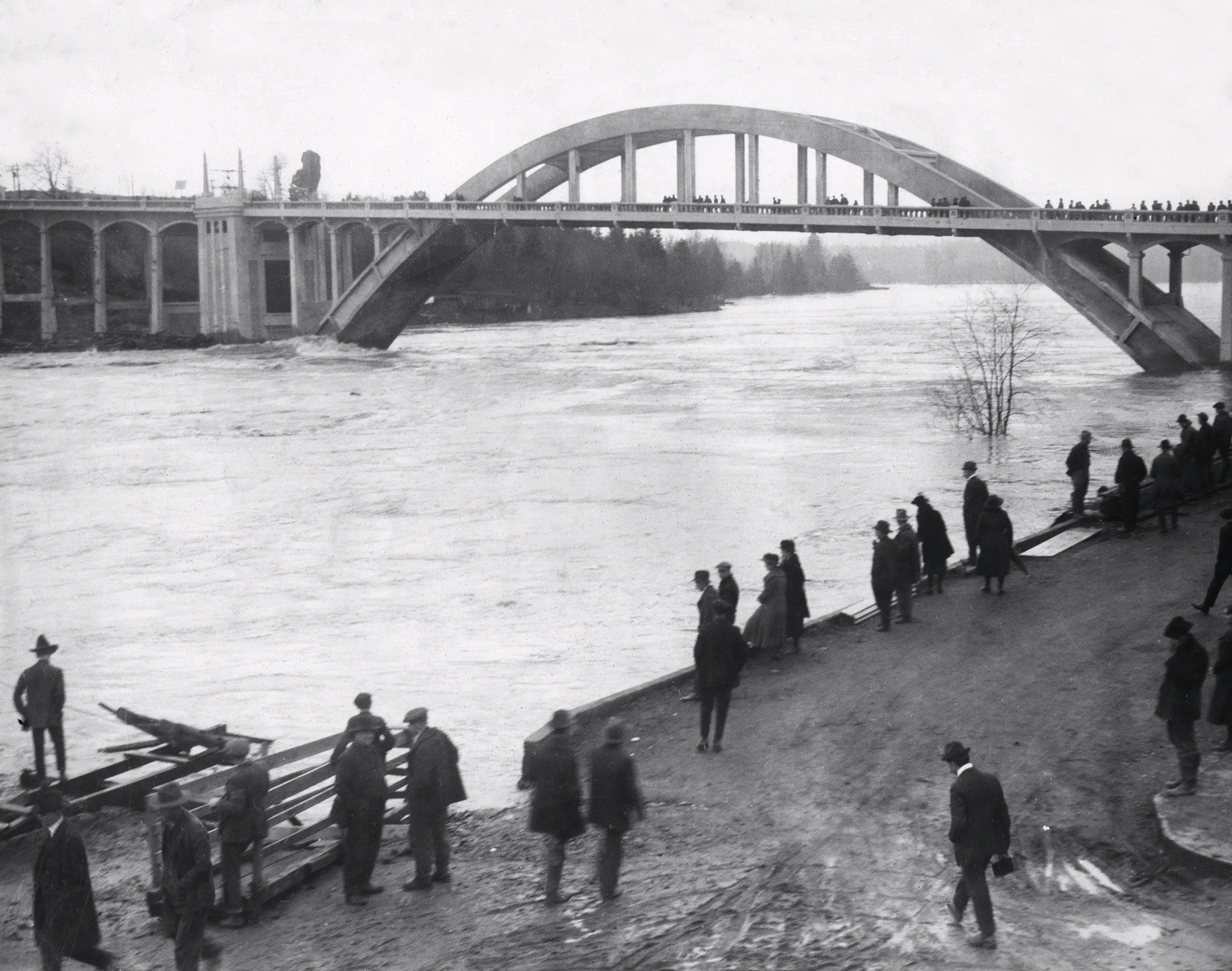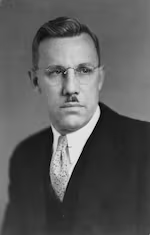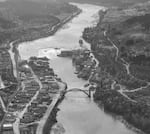One hundred years ago the Willamette Arch Bridge opened, connecting Oregon City and West Linn. The Oregonian reported an estimated 10,000 people attended the Dec. 28, 1922, dedication ceremony.

The Willamette River (Oregon City Arch) Bridge as seen in 1922.
Courtesy Oregon Department of Transportation Bridge No. 00357
Mayors of both cities symbolized the merger of their communities by officiating at a mock wedding held on the new bridge.
A century later, that marriage remains strong. Besides some refurbishments, including a seismic retrofit in 2012, the bridge remains substantially unchanged since the dedication.
“— Oregon State Highway Commission Biennial Report, 1922“The most artistic appearing large bridge in the State.””
Legendary state engineer Conde McCullough designed the Arch Bridge early in his career. Working for the Oregon State Highway Department, McCullough custom designed hundreds of Oregon bridges, including over 30 arched spans. The Arch Bridge represents one of his first achievements.

Willamette's Arch Bridge as seen in 1968.
Courtesy Library of Congress
McCullough combined engineering efficiency with aesthetic appeal to create graceful landmark bridges, including several soaring coastal arches along Highway 101.
“— Oregonian, Dec 29, 1922“Molded in bold artistic lines, the new span fits well with the beauty of the natural setting in which it lies.” ”
In a letter McCullough wrote to an acquaintance, Portland banker J.C. Ainsworth in 1922, McCullough said he was “foolishly proud” of the recognition he received for his work on the Willamette Arch Bridge. He noted that an engineering trade journal described the challenges of the location as “ten to one more difficult than any problem presented by the Portland bridges.”

Conde McCullough, the famed bridge engineer responsible for many of Oregon's most iconic bridges.
Courtesy Oregon Historical Society Research Library, CN 01168 / Oregon Historical Society Research Library CN 01168
The 1922 Arch Bridge replaced an 1888 suspension bridge. That structure used wooden support towers for the cables and was the first true suspension bridge west of the Rocky Mountains. Previously, a toll ferry operated in the area.
McCullough took advantage of the area’s natural beauty. He designed the bridge for cars, but added pedestrian walkways on both the north and south sides, offering spectacular views of Willamette Falls.
The bridge’s central piers originally held public restrooms. The state closed them in 1937 due to vandalism. Today, the bridge is listed on the National Register of Historic Places.
The communities of Oregon City and West Linn, and the Confederated Tribes of the Grand Ronde celebrated the anniversary in October.

Arch Bridge over the Willamette River, connecting Oregon City and West Linn.
Courtesy Oregon Historical Society, Org Lot 1284 / Oregon Historical Society, Org Lot 1284



